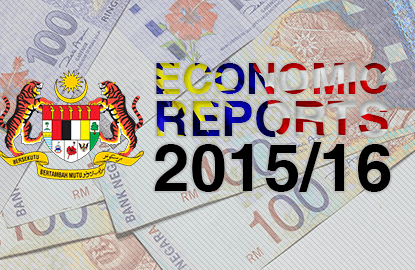
This article first appeared in The Edge Malaysia Weekly, on October 26 - November 1, 2015.
 THE federal government’s debt service charges are estimated to reach RM26.64 billion in 2016 — up from RM24.4 billion this year and RM22.6 billion in 2014 — making up a sizeable 12.4% of total operating expenditure.
THE federal government’s debt service charges are estimated to reach RM26.64 billion in 2016 — up from RM24.4 billion this year and RM22.6 billion in 2014 — making up a sizeable 12.4% of total operating expenditure.
To put the figure into perspective, it is slightly more than the RM26 billion dividend that national oil company Petroliam Nasional Bhd paid the government in 2015. (Petronas had to dip into its cash reserves as the amount generated from its operations could not cover both the dividend commitment and its capital expenditure.)
It is also almost as big as the RM27 billion in revenue that the government expects to get from the Goods and Services Tax (GST) for the last nine months of 2015.
The debt service charges for 2016 — equivalent to RM2.22 billion a month, RM512.3 million a week or RM73 million a day — are enough to buy at least 14 Airbus 380-800 aircraft (at US$428 million each) or 7,611 Lamborghini Aventador LP 750-4 Superveloce sports cars, which debuted in Asean this year (five units were allocated for Kuala Lumpur at RM3.5 million each, including taxes).
For the man in the street, RM26.64 billion is enough to give every Malaysian (population: 31.1 million) RM856 — that’s RM2.30 a day for a year.
The rise in debt service charges is in tandem with the increase in federal government debt to RM627.5 billion or 54% of gross domestic product as at end-June 2015 from RM582.8 billion or 52.7% of GDP as at end-2014. That’s excluding the debt guaranteed by the government, which stood at RM175.8 billion as at end-June 2015.
The debt rose this year mainly because of higher domestic debt issuance to meet deficit financing requirements. “Domestic debt remains a major portion of total debt, at 97% (RM608.7 billion), with MGS (Malaysian government securities) and MGII (Malaysian government investment issues) constituting 87.8% of total debt (47.4% of GDP,” states the Economic Report 2015/16.
“The remaining 3% (RM18.8 billion) of total federal government debt is from offshore borrowings, which is mainly denominated in US dollars.”
It adds that offshore borrowings remain manageable at 1.6% of GDP, despite the appreciation of the US dollar.
The total federal government debt reflects the accumulated funding requirements to meet deficit financing and the civil servants’ housing loan scheme, the report states.
Although debt is well capped at 55% to GDP, placing Malaysia among medium-indebted countries, the government says it will ensure its financing needs and debt service charge obligations are met at the lowest possible cost over the medium and long term.
“The government is committed to sound debt management through adherence to fiscal rules and regulations. In this regard, the fiscal consolidation, while minimising the deficit, is also aimed at curtailing the creation of new debt,” says the report.
MGS remained the largest debt instrument of the government as at end-June 2015, with an outstanding amount of RM343.8 billion or 54.8% of total federal government debt, while MGII stood at RM207 billion (33%). According to the report, financial institutions continued to be the largest holders of MGS and MGII (31.3%), followed by the Employees Provident Fund (23.2%) and insurance companies (5.5%).
Outstanding market loans of RM13.3 billion remained the largest component of accumulated offshore borrowing while project loans stood at RM5.5 billion.
Save by subscribing to us for your print and/or digital copy.
P/S: The Edge is also available on Apple's AppStore and Androids' Google Play.